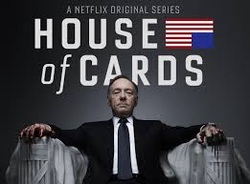
Our firm was retained by a Northern California entertainment start up to set up and raise from outside investors up to $1.5 million. The company had been in business for about one year and had completed their business plan along with the first phase of their product development. There were three founding executives, each of whom had put in about $175,000 of their own capital.
Our first job was to restructure the company. Like most small startups the founders had established the business as a Limited Liability Company. The problem with LLCs is that the owners hold “membership shares” in the company, not stock. Instead of selling stock we suggested that investors make “Bridge Loans” to the new “C” corporation that could be converted into common stock at a future date. There is really no good mechanism to do this as an LLC, so we converted the original LLC into a Nevada based “C” corporation.
Once the company was converted into a “C” corporation all sorts of options opened up for fundraising. For example, “C” corps may have more than one class of stock. You can have founder’s shares, common voting shares, common non-voting shares, preferred voting and non-voting as well. Even the common and preferred shares can be priced differently depending on when the shares are purchased. Example: “A” round common stock could be priced at $1 per share; and later “B” round common stock could be priced at $2 per share (or more), depending on the overall increased value of the company. Note: the difference between common and preferred stock is that preferred stock always pays a fixed dividend, which must be paid to the preferred stockholders before any common stock dividend may be paid out.
Upon setting up the initial “C” corporation with 10,000,000 shares, we issued 6,000,000 shares to the three founding executives, plus another 225,000 shares, unevenly divided, among the first 5 employees, depending on their rank and length of employment. An additional 1,275,000 shares were set aside as an incentive stock pool for new officers and employees. A block of 1,500,000 shares of the initial stock was set aside for the Bridge Financing warrant holders. The final 1,000,000 shares were put in reserve for new common stock holders and strategic partners.
Three important documents needed to be created to enable us to move forward:
- Bridge Financing Agreement – This is a seven page memorandum that sets forth all of the terms of the Bridge Loan, including the issue of warrants, valuation, rights, representations and warranties (if any), governing law, assigns, and timing. The minimum loan amount allowed was $25,000;
- Warrant To Purchase Common Stock – A warrant is a right to convert a loan into common stock and establishes the price that the Bridge Loan can be converted, and when. In this case, we established that after two years the Bridge Loans could be converted into common stock at the transfer price of $1 per share. The Bridge Loan terms do not require that the loan holders convert their loans into company stock, but they do establish the mechanism and the timetable to do so;
- Promissory Note – This is the loan document. In this case, the company agreed to pay the Bridge Loan holders 2% interest only, per annum, on their note for two years. After two years the note could be converted to common stock at the note holder’s discretion, through the exercise of the warrants. The Note also establishes that “Maker may prepay all or any portion of the principal indebtedness without penalty at any time.” But also that “Maker shall not pay any dividends to its shareholders until all principal and interest on this Note has been paid in full.”
Once all the financing documents were completed, we were ready to meet with investors and accept checks and wire transfers. My team, which included the three founders, was able to meet with about 36 groups and raised $1,115,000 from 24 investors. The entire process took about 12 months to complete. The two single largest investors were invited to join the board of directors as representatives of all the note holders. As note holders, the investors had voting rights and some “super majority” rights that prevented the founders from making any business altering decisions that the note holders would not approve of (like giving themselves huge raises or changing the fundamental business of the company).
After two years almost all of the initial 24 warrant holders converted their warrants into common stock. The value of the initial stock went up from $1 per share to $2.50 per share for later investors.
We are not saying that this is the only way to raise money for young, start-up companies, but it was an efficient one for these entrepreneurs. What made this effort successful for this company was the fact that their project was based on a bestselling book by two of the founders, and they had already created a large and ardent following by the time they engaged my firm to do fundraising for them.
Crowdfunding is becoming so (for want of a better word) crowded, and raising money from institutional investors often costs more and takes longer. This method allows companies with a good business to raise fairly large amounts of money from investors in a way that benefits everyone.
If you too have a compelling venture and well thought out business plan, then this road map for raising capital may get you on your journey as well.
Let us know if you need an experienced guide.



















 RSS Feed
RSS Feed
